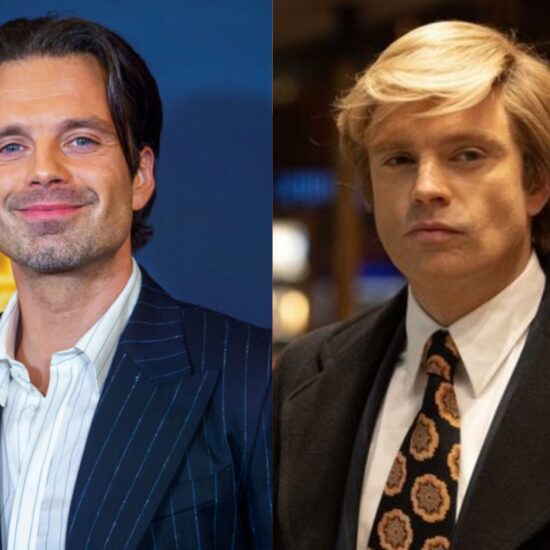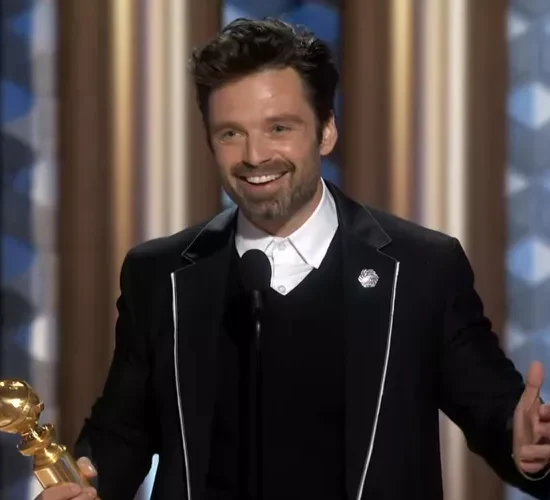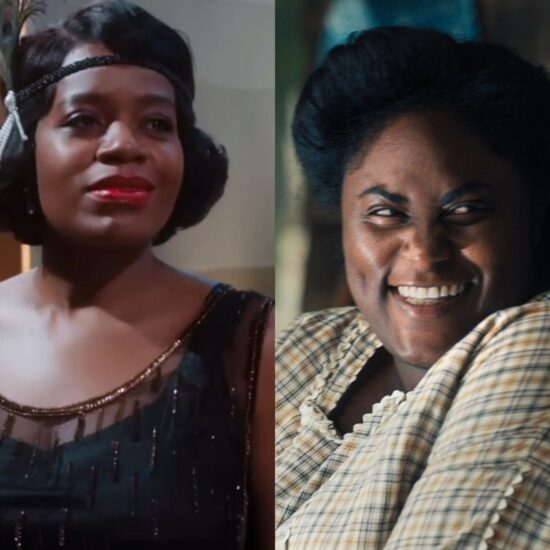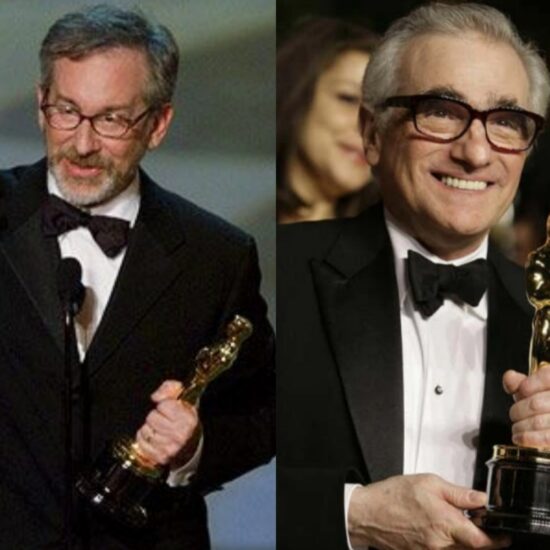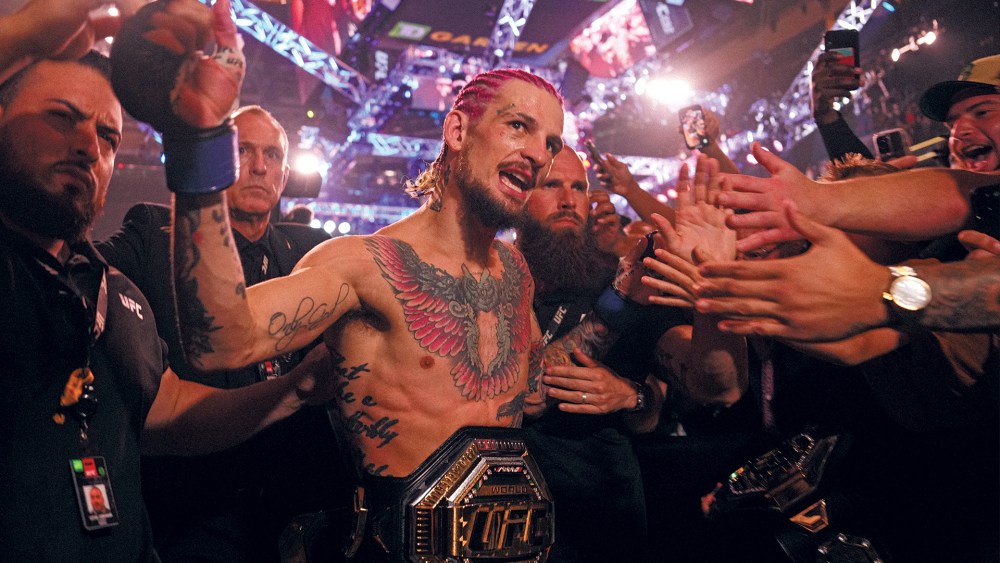
For decades, sports on television was a bulletproof business. Live games, airing on local stations or national networks, reliably brought in big audiences and even bigger advertising hauls.
Inside of just a few years, though, nearly everything about the way TV makes money from sports has begun to change as the industry’s transition to streaming upends the marketplace. Into this volatile mix, Endeavor has drop-kicked a newly created sports entity that is built for the future of both television and fandom. As of Sept. 12, that new entity has started trading on the NYSE under the feisty ticker symbol TKO.
“We sit at the epicenter of large and fast-growing markets,” Endeavor president Mark Shapiro promises. “We live in the world of the super fan.”
TKO Group Holdings was birthed as a public company this month with the completion of Endeavor’s acquisition of WWE, the long-dominant pro wrestling company owned and operated for 70 years by the McMahon family. Endeavor leaped at the chance to acquire the sui generis WWE franchise because it’s a natural companion business for UFC, the world’s most popular mixed martial arts league, which Endeavor bought for $4.1 billion in 2016. At the time, the industry snickered that Endeavor CEO Ari Emanuel overpaid for UFC in his zeal to expand Endeavor beyond its roots as a talent agency into a full-blown media company. Six years later, WWE’s internal struggles opened the door for Endeavor to engineer the merger of UFC and WWE into a separate company, TKO. The newly created fight club is valued at $21.4 billion, with UFC accounting for $12.1 billion of that valuation.
Reigns: Per Bernal/WWE; O’Malley: Mike Roach/Zuffa LLC/Getty Images
The formation of TKO as a separate stock is designed to attract investors who only want to put money into a sports-focused venture rather than bet on the fortunes of the entirety of Endeavor, whose holdings now range from the Professional Bull Riders league to WME to New York Fashion Week and other art, fashion and lifestyle event franchises. Endeavor has been a publicly traded stock since April 2021. Through some deft financial choreography, it controls the management of TKO through its 51% ownership stake in the new company. The remaining 49% of TKO shares were distributed to existing WWE shareholders in the transaction that closed Sept. 12.
While the brawlers and maulers are now under the same corporate roof, UFC and WWE will continue to operate separately. There will be no blending of UFC’s cage fights and WWE’s highly scripted bouts. However, Shapiro sees no end to the growth opportunities that lie ahead for TKO and Endeavor with the UFC and WWE brands.
“These are highly engaged, global fan bases who are young, diverse and incredibly passionate,” Shapiro says of the UFC and WWE demographics. “They’re seeking sports, entertainment, music, live events and premium experiences — all of which we specialize in.”
TKO and Endeavor’s fortunes will be closely tied. Endeavor will consolidate TKO’s earnings on its balance sheet because of its majority ownership stake. “From a financial engineering perspective, this helps Endeavor,” says David Joyce, media analyst for Seaport Research Partners.
Emanuel is taking a characteristically giant swing by launching TKO as a separately traded public entity at the most turbulent moment in the history of sports TV. He’s gambling that rights fees for unique sports properties such as UFC and WWE will only rise in the coming years, and the first big test is around the corner. Emanuel and Shapiro are tasked with negotiating new U.S. TV rights deals for UFC and WWE expire. UFC’s pact with ESPN is up in 2025; WWE’s TV deals with NBCUniversal and Fox are up in October 2024 while its digital rights pact with Peacock expires in early 2026.
The pair have sold TKO to Wall Street on the promise of realizing significant gains, particularly for UFC, over the financial terms of each organization’s previous TV contracts. Negotiating those deals at a time when media earnings are in the tank will require a feat of dealmaking prowess. Wall Street’s top media analysts are cheering them on.
“Endeavor remains our top pick across [media and entertainment], given its portfolio of assets across sports and live events and its industry-leading talent agency business,” Benjamin Swinburne, Morgan Stanley’s top media analyst, wrote in a research note last month. “We remain bullish on the unique value of sports, including the UFC and WWE, which we expect will translate into strong [earnings] growth for Endeavor.”
The timing and terms of the WWE deal are sweet indeed for Endeavor. In some respects, the circumstances echo the coup Emanuel pulled off in 2009 when his smaller hotshot talent agency swallowed up the once-mighty William Morris Agency to form William Morris Endeavor. The fact that WWE has a big TV rights renewal coming up in about a year is reminiscent of the dynamic that existed in 2016 when Endeavor acquired UFC and then struck a lucrative, five-year linear and pay-per-view pact with ESPN.

Roman Reigns during the 2016 WWE Live India Tour.
AFP via Getty Images
“This is a once-in-a-lifetime opportunity to bring together two leading pure-play sports and entertainment companies that operate in the most attractive parts of the media ecosystem,” Emanuel told investors about the UFC-WWE pact after the initial sale agreement was inked in early April.
No doubt, Endeavor is heading into the media Thunderdome. The fists that fly in WWE’s rings and UFC’s fighting cages are nothing compared with the turmoil in the pay TV sector. For evidence, look no further than the recent 12-day standoff between the Walt Disney Co. and Charter Spectrum over contract terms for ESPN and other channels. Despite the current climate, astute observers think Endeavor has the fighters to pull it off.
Jessica Reif Ehrlich, the influential BofA Securities media analyst, shares Swinburne’s enthusiasm for the creation of TKO. “While many investors are concerned the challenges within the linear ecosystem may inhibit UFC’s ability to capture a healthy increase in their upcoming renewal with ESPN, we still remain bullish because of its attractive demographics, the engaged fan base and year-round content,” Reif Ehrlich wrote. “The UFC provides a unique, complementary audience when compared to ESPN’s traditional sports portfolio (e.g. football, baseball, basketball) and therefore earns an attractive return per dollar of content spent vs. other sports rights.”
The biggest challenge for sports on TV in the near term will be adjusting to the new economics of pay TV. Sports has long been shielded from the pressures of economic downturns and network cost cutting because it has been so profitable. But the same factors that have fueled Hollywood’s ongoing writers and actors strikes are in play when it comes to sports.
The slow but steady decline of the linear cable TV business — cord cutting — is finally taking its toll on ESPN and other networks heavily invested in sports. There’s simply less profit to go around amid the shift in a marketplace where consumers now pay $5 to $25 a month for an individual streaming service, compared with $100 to $200 a month (or more) for a bundle of channels delivered via cable. The largest media conglomerates have incurred steep losses in recent years as they’ve invested in building up subscription streaming platforms (Disney+, Max, Paramount+, et al.).
ESPN and other sports channels were a cornerstone of the cable bundle because of the rabid fandom around various professional leagues and teams. Those channels traditionally commanded the highest fees from cable operators because live sports is often a must-have item for those consumers who spend the most on pay TV services. To wit, note how quickly college football fans ran to social media to blast Charter for the blackout of ESPN on Aug. 31, just as college football season began.
On the other hand, cable customers who never watched ESPN or Fox Sports still had to shoulder the high cost of those channels. Consumers had to put up with it because there were no other options, until streaming came to fruition.
The great un-bundling from cable to streaming has taken an even bigger toll on regional sports networks. Those regional services that carry hometown teams also historically commanded high fees that were passed on to all consumers. Now, with subscriber rates declining every quarter, an increasing number of cable operators say they are ready to cut the channels business entirely and focus on providing the broadband and Wi-Fi services that consumers need in order to watch their favorite streamers.
All of this means less revenue flowing into sports outlets. And lower cable subscription rates translate to smaller audiences overall, which in turn leads to lower advertising revenue. The industry hopes this melting ice cube dynamic can be stemmed by offering sports channels for purchase as stand-alone streaming options.

After a knockout at a UFC event in Las Vegas in July.
Zuffa LLC via Getty Images
In this rocky transitional period, however, the struggle is playing out in public. In one high-profile example, Major League Baseball had to take over management of the Bally Sports San Diego RSN in May because the channel defaulted on its rights payments to the San Diego Padres. If MLB hadn’t stepped in, the Padres wouldn’t have had a local TV outlet for most of their games this season, depriving the team of revenue that it counted on to cover its payroll. The circumstances around the Bally Sports flameout were exacerbated by heavy debt taken on by its parent company, Diamond Sports. But the domino effect is being felt across the industry.
“We have only done business in an environment where the sports television economy is growing,” Michael Mulvihill, president of insights and analytics for Fox Corp., said in July at the Variety + Sportico Sports and Entertainment Summit. “That era of subsidization where we all benefit from the fact that consumers are paying a monthly bill and in many cases not watching our networks — that era is ending.”
What’s more, the business of sports has also reached a generational crossroads with millennials and Gen Z. Younger sports fans are often more likely to follow individual players than teams, thanks to the influence of social media and online fantasy sports leagues. Young adults are among the consumers least likely to sign up for high-priced cable services where live game coverage is most plentiful. That all adds up to a generation of sports fans who are growing up watching far more highlights and clips of their favorite players online rather than sitting in front of a TV to take in a full game.
Meanwhile, older sports buffs who have come to think of access to ESPN as a birthright are frustrated by all the changes across the TV dial. Netflix has famously vowed to stay out of the sports business because of the challenge of monetizing sky-high rights fees on its platform, which is built for on-demand viewing (although the streamer is increasingly experimenting with other forms of live programming). Amazon and Apple have tiptoed into sports with limited rights deals: “Thursday Night Football” for Amazon, a cluster of Major League Baseball games for Apple.
Even for avid sports fans, the landscape can be confusing. Bob Costas, the veteran sportscaster and commentator, senses a wariness among sports fans about the new world order. “Think about New York sport fans. Half the time they don’t know where the Yankee game is going to be on any given night,” Costas says. “It could be on channel 11. It could be on Apple. Or it could be on ESPN. The average fan is saying, ‘What the heck?’”
Teams and leagues also bear some of the blame for hiking the price of tickets to stadiums, arenas and ballparks beyond the reach of some consumers. “The more casual fan is frustrated because they say, ‘I can’t afford to go to the game — at least not often. And now I can’t even find where the heck my team is on TV,’” Costas says. “The general impression is that they’re being milked at every turn for every last nickel.”
UFC and WWE are a breed apart from the Big Four professional sports leagues — NFL, NBA, NHL and MLB. UFC fights and the staged bouts in WWE’s “squared circle” ring run year-round, in contrast to the seasonal format of football, basketball, baseball and hockey. The consistency and the appeal to young men is a big draw for networks.
The last time UFC and WWE were in the market with big TV-rights packages, both caught lucky breaks in hitting just as studios and streamers were in a mad scramble to acquire content for new programming ventures. UFC fights and pay-per-view events became a pillar of ESPN and its streaming sibling ESPN+ under a rich contract. And WWE was up for grabs as NBCUniversal needed to stock up Peacock and as the Fox broadcast network began a new chapter after the Murdochs sold most of 21st Century Fox to Disney in 2019.
Despite the merger, WWE and UFC will remain largely autonomous organizations. But students of sports trends will keep a close watch to see how the under-one-roof association plays out with fans.
“For UFC, this is a chance to reach a different audience,” says Patrick Rishe, director of the sports business program at Washington University’s Olin Business School. “It will be interesting to see if they can bring WWE fans on board, and, likewise, if they are going to be able to turn some of the UFC loyalists into WWE consumers.”
Endeavor was able to pounce on WWE because the Stamford, Conn.-based wrestling giant was on its heels at the end of last year. WWE’s longtime leader, 78-year-old Vince McMahon, has been under law enforcement and regulatory scrutiny since July 2022, when The Wall Street Journal disclosed that he had paid out more than $12 million in settlements related to sexual misconduct claims over 16 years.
That sparked probes of WWE’s handling of the situation and questions about the disclosure requirements to shareholders around the payments.
Last year, amid the closer look at WWE’s financials, the company was forced to revise some of its past earnings disclosures to account for $19.6 million in payments made from his personal funds made by McMahon over the years. McMahon has denied the allegations against him. “Throughout this experience, I have always denied any intentional wrongdoing and continue to do so,” he said in a statement released last month.
Beyond McMahon’s personal travails, WWE has had management difficulties since early 2020. The company’s stock cratered by double digits after McMahon fired his day-to-day leaders, co-presidents George Barrios and Michelle Wilson. McMahon stepped down in July 2022 after the Journal exposé, and was succeeded by his daughter, longtime WWE executive Stephanie McMahon, and former CAA agent Nick Khan as co-CEOs. But in January, Vince surprised Wall Street and WWE watchers by using his clout as majority shareholder to reinstate himself as executive chairman. A week later, Stephanie left the company, and her father hung a “For Sale” sign on its door. Endeavor was seen from the start as the likeliest buyer. For one thing, Emanuel and Co. were already familiar with WWE’s business because the company has been represented for years by WME.
The UFC-WWE transaction is poised to create a waterfall of benefits for Endeavor. Endeavor and WWE will both contribute $75 million in equity to set up the new company with $150 million in cash on the books. But as part of the transaction, Endeavor sweeps up the cash leftover on UFC’s and WWE’s books and it gets to offload to TKO some $2.7 billion in debt — or more than half of Endeavor’s existing $4.5 billion in leverage. That heavy load of red ink has been a handicap for Endeavor, which has been valued by investors at a market cap of about $10 billion based on its stock price over the past year.
McMahon, meanwhile, made more than $110 million from the cash distribution to WWE shareholders following the closing of the deal. Going forward, McMahon owns 16.6% of TKO. Khan oversees day-to-day operations and has become a respected leader since joining WWE in 2020.
As the major shareholder of TKO, Endeavor stands to reap the rewards of strong, free cash flow generated by UFC and WWE as operating businesses. Both companies make more than two-thirds of their annual revenue through TV-rights deals that are contractually guaranteed, making it easy to project out earnings. About 10% of revenue at each shop comes from an extensive live-event touring schedule. Those sources combined ensure that TKO will have steady cash flow coming in the door, which Endeavor can tap to pay down more debt or buy back its own shares to buoy the price.
To that end, the UFC-WWE union comes at a fortuitous time for Endeavor for yet another reason: CAA, archrival to WME, sold a majority stake in the company to French entrepreneur François-Henri Pinault that valued the agency at $7 billion in total. CAA’s high valuation helps its competitor make the case that Endeavor’s assets, other than UFC, have been undervalued as reflected in the company’s stock price, starting with talent agency WME. In the past year, Endeavor shares have ranged from a low of $18.58 to a high of $26.26; since Sept. 12, shares have hovered in the $21 to $22 range. Meanwhile, TKO shares held steady in the first few days of trading at $100 to $105, close to the average for WWE shares since the initial TKO deal agreement was reached in April.
In addition to landing big increases in upcoming TV-rights negotiations, Endeavor has vowed to Wall Streeters that Endeavor and UFC will use their expertise and muscle to boost WWE’s advertising sales, including its social media monetization. UFC has been adept at nurturing young stars — bankable fighters of late include Sean O’Malley, Sean Strickland and Zhang Weili — and catering to fan interest in them through social media and personal appearances. WWE has weathered the ups and downs, groin kicks and nose tweaks of the grappling biz since the company was founded by Vince McMahon’s grandfather, former promoter Jess McMahon, in 1953.
With the merger, there will be cuts. The companies do a lot of the same things, so they have a lot of overlapping operations. Both run athletic training facilities, both tour the country with live events that generate ticket and merchandise sales and both court big-dollar advertising and sponsorship deals. Endeavor estimates the combination of the businesses will generate $50 million to $100 million in cost savings.
Wall Street has pinned high expectations on TKO, projecting that it will yield a compound annual growth rate of 10% to 15% over the next four years. That’s a big ask from a media-centered company at a time when earnings across the industry are struggling.
“In the broader media landscape, there is a dearth of growth opportunities out there right now,” says Kutgun Maral, an Evercore ISI research analyst who follows Endeavor. “TKO makes it a lot easier for investors to decide where to put their money.”
Todd Spangler and Brian Steinberg contributed to this story.









